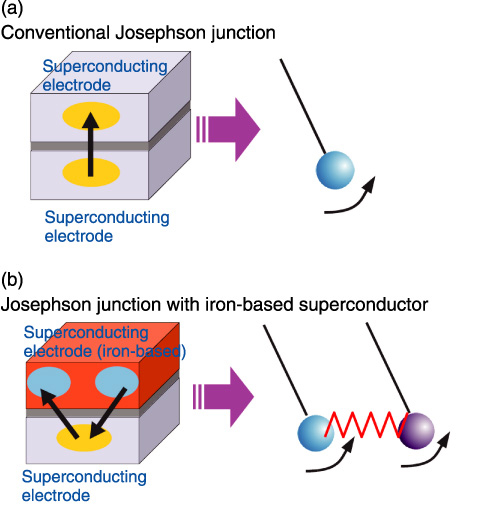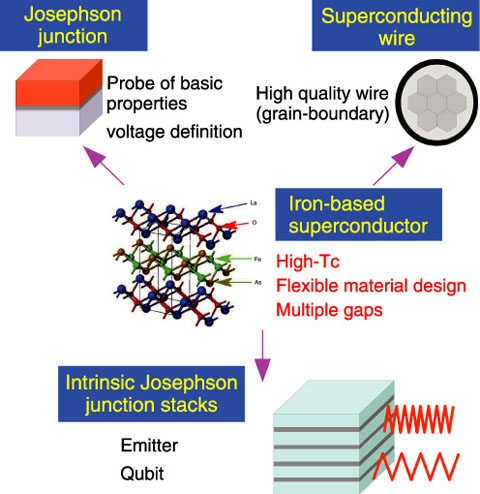
Fig.12-8 Models of Josephson junctions

Fig.12-9 Application potential of iron-based superconductors
Superconductivity is one of the most remarkable phenomena in condensed matter systems. A typical behavior is the sudden disappearance of electric resistance below the superconducting transition temperature. Such a property not only brings about transportation with no energy loss but also leads to sensitive detectors and devices much superior to standard ones. Presently, in the nuclear R&D field, potential applications of the superconductors are being intensively studied. In fact, a superconducting coil will be indispensable for a nuclear fusion reactor.
A new superconducting material, an iron-based superconductor was discovered in 2008. This type of a material has a very high transition temperature compared to copper-oxide superconductors and a richly varied chemical composition. One of its most curious features is that multiple (at least three) superconducting gaps coexist, although most existing superconductors have a single gap. Recently, we have been studying the device characteristics originating from their multi-gap feature, focusing on the Josephson junction, which is a typical superconducting device.
First, we directed our attention to the fact that a conventional Josephson junction is theoretically equivalent to the motion of a single pendulum, and the behavior of the superconducting tunneling current is well described by such an elementary dynamical model (Fig.12-8). The present task is to reveal how the conventional description alters when one of the superconducting electrodes is replaced by the iron-based superconductor. We successfully demonstrated that the system is described by coupled oscillators, and went on to predict various electrical and magnetic characteristics of iron-based superconducting devices.
The present contribution provides a theoretical foundation of Josephson junctions with iron-based superconductors. We believe that this study clarifies the essence of iron-based superconductors and will lead to further developments in superconducting engineering (Fig.12-9).
This work is supported by CREST “Framework Development for Multiscale and Multiphysics Simulations towards Novel Application of Superconductivity” from Japan Science and Technology Agency.
<Previous: 12-3 | Next: 13 Scientific & Technical Development for Nuclear Nonproliferation >